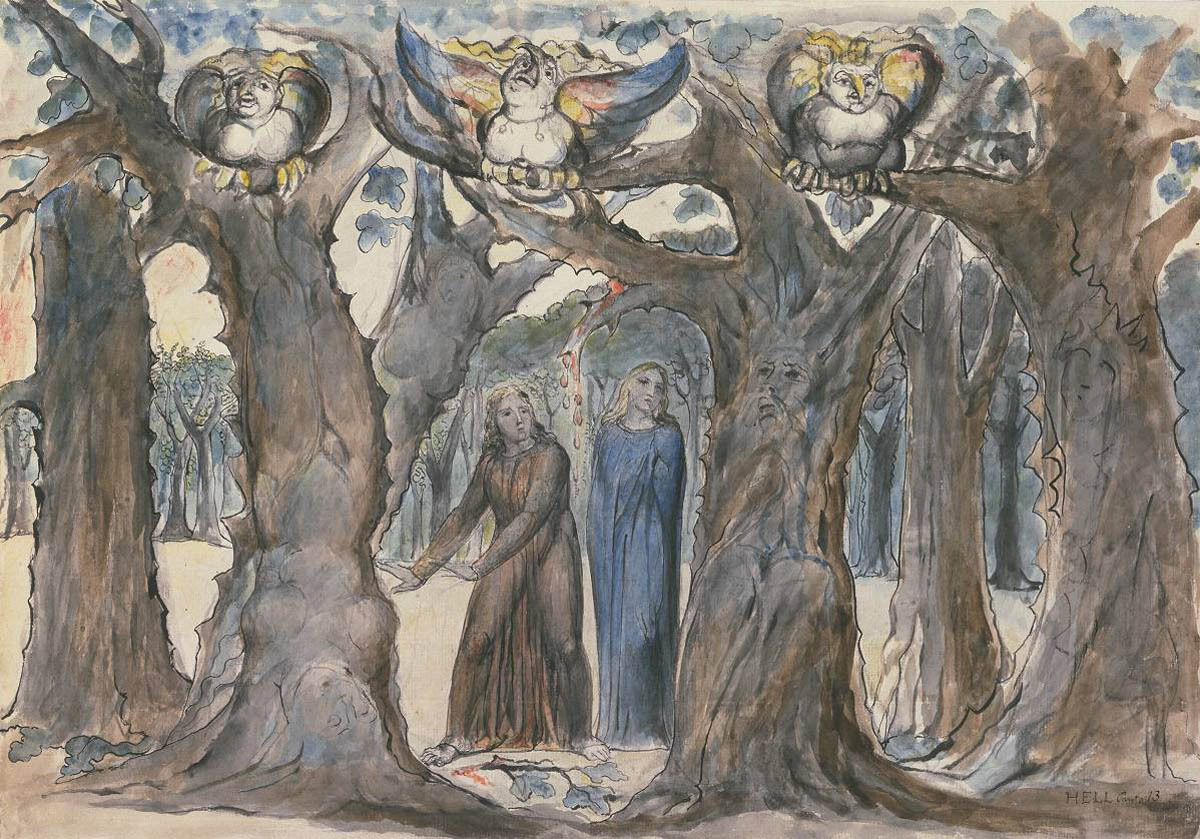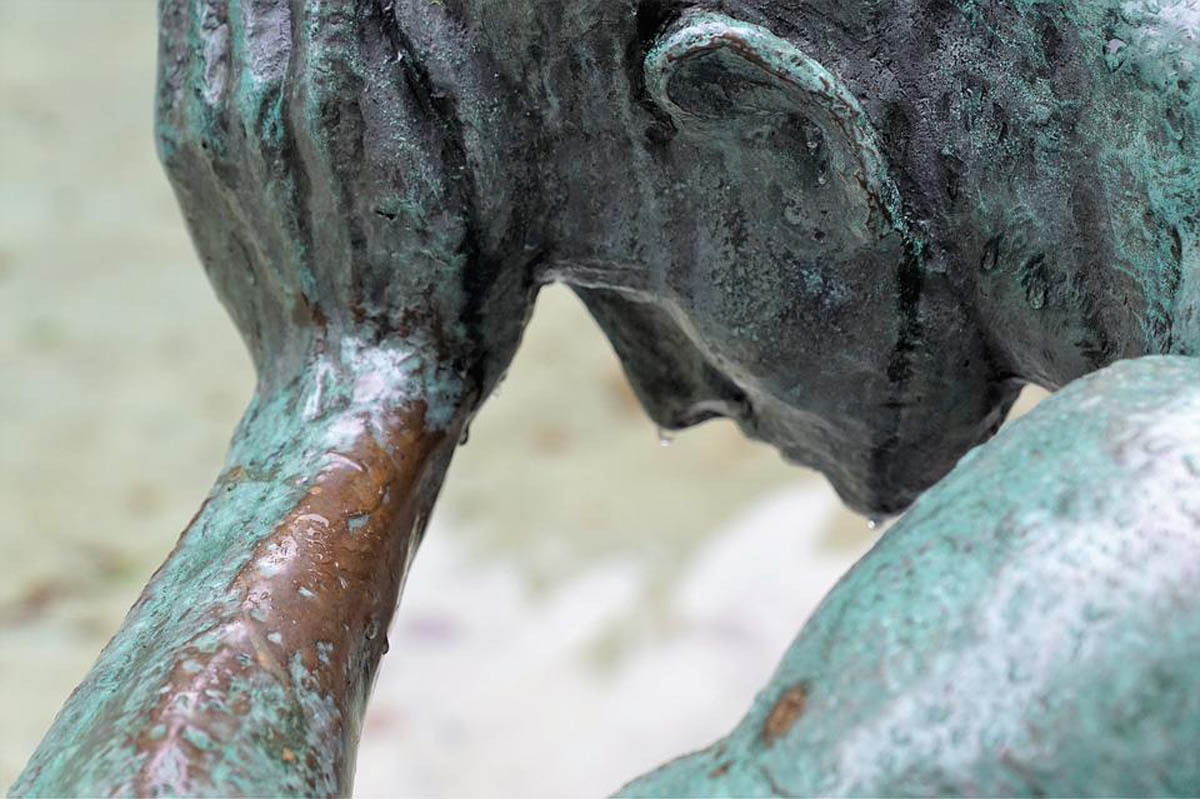
Suicide is the ultimate form of self-harm. In Inferno 13, Dante forges a new language of pain and despair to evoke the tortured minds of those who choose this ending.
At the start of the canto we return to the landscape of the poem’s prologue, finding ourselves, again, in a pathless wood – not coincidentally, I think, as Dante’s own lost state in Canto 1 plunged him into a despair that, had it not been for Virgil’s intervention, might have driven him to suicide. This second wood is a deeply sinister place and Dante piles on the negatives, contrasting it with a normal, healthy wood: here the foliage isn’t green but dusky in colour; the boughs aren’t smooth but knotted and warped; instead of fruit there are poisonous thorns. Worst, the wood is infested by harpies – those hideous monsters of Greek mythology, half woman, half bird, whose sharp claws tear at the flesh of their victims.
Virgil tells Dante he’s going to find it hard to believe what he sees here. And Dante is indeed bewildered, at first unable to match sounds with sights:

Dante’s confusion at the start of this passage is a glimpse into the darkness, the fog of incomprehension that invades the suicide’s mind. He gropes at his guide’s perception – Cred’io ch’ei credette ch’io credessi, “I think he thought that I thought” – as the gloom thickens. Convoluted constructions of this kind are scattered about the canto, hinting at the destructive struggles that consume and eventually extinguish the divided self.
Then hell turns interactive, a voyage of incredulous and horrified discovery. At Virgil’s invitation, Dante participates directly in the sinner’s punishment. Unwittingly, he becomes an agent of suffering, taking the part of the harpies in both “inflicting pain and giving pain an outlet”. We share his dawning dismay as we discover with him the abomination that is the man-tree hybrid – a plant that bleeds and speaks – and the fact that he is now implicated in its anguish.

Here, as throughout this canto, Dante’s language is filled with harsh sounds denoting the tearing of flesh, the crippling and laceration of self-harm. Just in the above passage we find:
• tronchi qualche fraschetta – break off a little branch
• perché mi schiante? – why do you tear me?
• perché mi scerpi? – why do you rip me open?
• fatti sterpi – turned to trees
• stizzo verde ch’arso – green brand that is burning
• scheggia rotta – broken twig
Note the agonized “why” questions, surely a marker for suicidal thoughts. We are about to meet Piero delle Vigne, who rose from humble origins to become Chancellor to the Holy Roman Emperor, a post he held for 20 years before falling into disgrace and ending his days in prison. He is said to have dashed out his brains on the wall of his cell. Dante will vindicate his memory from the unjust charges of treason that brought about his fall.
In Modern Painters, Ruskin writes: “Milton’s effort, in all that he tells us of his Inferno, is to make it indefinite; Dante’s, to make it definite.” That observation is true not just of the architecture of hell, which Dante describes in minute detail, but also of the punishments suffered by the sinners in each circle. Certainly, the detail in the wood of the suicides has a nightmarish clarity.

It is said that, when Dante walked in the streets of Verona (where he lived in exile), people pointed at him and said, “That is the man who actually went to hell and came back to tell us what it is like”. Whenever I read this passage, I understand why they thought that.
Genius line:
sì della scheggia rotta usciva inseme parole e sangue – The singular verb denotes a single thing – screaming blood or a blood-soaked scream. For a discussion of speech and language in Inferno 13, see Leo Spitzer’s excellent article on the subject.





